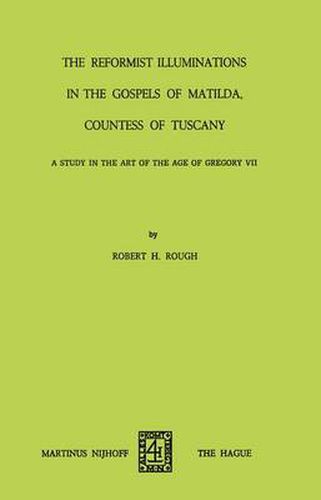Readings Newsletter
Become a Readings Member to make your shopping experience even easier.
Sign in or sign up for free!
You’re not far away from qualifying for FREE standard shipping within Australia
You’ve qualified for FREE standard shipping within Australia
The cart is loading…






The Gospels ofMatilda, Countess ofTuscany, is a manuscript written and illuminated in Northern Italy toward the end ofthe eleventh century. A credible fourteenth century document states that it was presented by the Countess to the Benedictine monastery of Polirone, near Mantua. In the manuscript’s pictorial cycle, the Cleansing of the Temple and the scenes related to it are iconographically extra ordinary. An understanding of them must begin with a study of their ideological sources, closely related historicfigures, Medieval writers who employed the figure ofthe Cleansing ofthe Temple, and the political-social movement ofthe Patarines. Then the Matilda Gospels’ illuminations will stand revealed as the key artistic expression of the Gregorian Reform and as a prime document of some of the most important events and ideas ofthe Middle Ages. II. ART AND THE REFORM OF THE ELEVENTH CENTURY Church reform in the eleventh century was a heroic engage ment. Norman Cantor calls it one of the four great world revolutions of Western history.! The authority of the papacy, theindependenceofthechurch,andtheveryleadershipofMedie val society were its mortally contested issues critical both to history and to political theory.2 Gregory VII and Matilda of Tuscany were but two of the vivid personalities among its partisans. But in the history ofart the struggle has been nearly invisible.
$9.00 standard shipping within Australia
FREE standard shipping within Australia for orders over $100.00
Express & International shipping calculated at checkout
The Gospels ofMatilda, Countess ofTuscany, is a manuscript written and illuminated in Northern Italy toward the end ofthe eleventh century. A credible fourteenth century document states that it was presented by the Countess to the Benedictine monastery of Polirone, near Mantua. In the manuscript’s pictorial cycle, the Cleansing of the Temple and the scenes related to it are iconographically extra ordinary. An understanding of them must begin with a study of their ideological sources, closely related historicfigures, Medieval writers who employed the figure ofthe Cleansing ofthe Temple, and the political-social movement ofthe Patarines. Then the Matilda Gospels’ illuminations will stand revealed as the key artistic expression of the Gregorian Reform and as a prime document of some of the most important events and ideas ofthe Middle Ages. II. ART AND THE REFORM OF THE ELEVENTH CENTURY Church reform in the eleventh century was a heroic engage ment. Norman Cantor calls it one of the four great world revolutions of Western history.! The authority of the papacy, theindependenceofthechurch,andtheveryleadershipofMedie val society were its mortally contested issues critical both to history and to political theory.2 Gregory VII and Matilda of Tuscany were but two of the vivid personalities among its partisans. But in the history ofart the struggle has been nearly invisible.